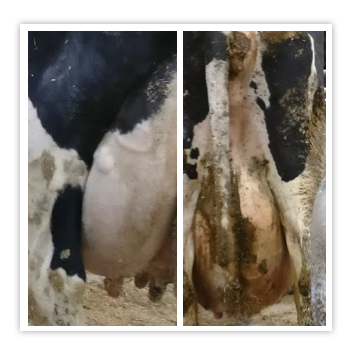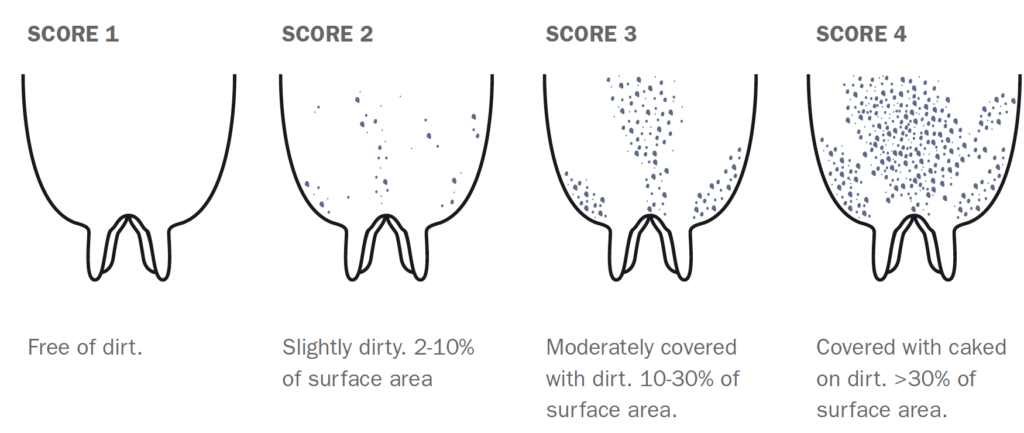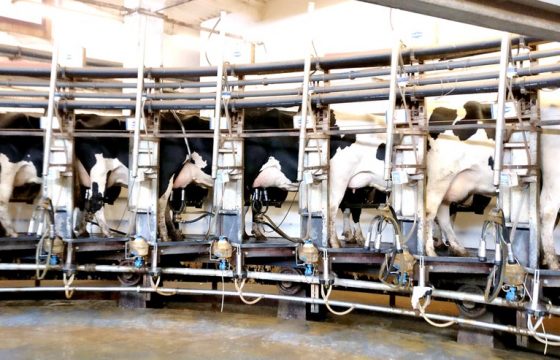Environmental control & Mastitis in dairy cows: The importance of keeping your cows clean, dry and comfortable
Environmental control on the farm is the first point to be evaluated when trying to prevent mastitis in dairy cows. Bedding is the major source of environmental bacteria, as teats are in direct contact with it when lying down, also should not forget alleys, holding areas, parlours, etc, because manure splashed on to walking cows will help to increase teat exposure and dirty hooves will easily contaminate clean bedding and teats when cows are lying down.
Introduction
Environmental control is the first key point to be evaluated and fixed in every single milk quality program or bovine mastitis program. Despite the information available about it, environmental mastitis in dairy cows is still a major issue all over the world.
The goal is to always keep our lactating, dry and transition cows clean, dry and comfortable in order to minimize teat exposure to environmental bacteria and thereby reduce the risk of intramammary infections (IMI) caused by pathogens like E. coli and Strep. uberis.
 There are different bedding materials worldwide, and the first choice will depend on availability, cost and type of facilities (bedded pack pen or freestalls).
There are different bedding materials worldwide, and the first choice will depend on availability, cost and type of facilities (bedded pack pen or freestalls).
Although there are some materials with a lower environmental bacterial load, bedding maintenance is even more important than the material that has been chosen. For this reason, we must schedule a bedding maintenance program for all the facilities to ensure a good environment, to prevent mastitis in dairy cows.
Other critical points for environmental cleanliness will be the stocking density of the animals, design of the resting area (freestalls or bedded pack pens) and ventilation of the barn.
As it’s said in milk quality: “In order to prevent mastitis in dairy cows, we need to think with the 1+1=3“.
How to evaluate the environment?
First we need to know how clean our cows are. Most of the time, we follow our “instinct” when we evaluate the farm environment just by taking a look around at the farm.

Figure 1: Different scores to evaluate cleanliness.
Although this is a first approach we can carry out a better and more accurate evaluation by looking at the animals in the milking parlour. By following this chart (figure 1), we can obtain accurate figures about how clean our cows are when they arrive at the milking parlour. Cows with a score of 3 and 4 have a 1.5 times greater probability of acquiring a new infection compared with a score of 1 and 2.
There is no clear goal in terms of cleanliness, but <20% having a score of 3-4 would be a good suggestion. Ideally, we should evaluate udder hygiene in 20% of cows in each pen or all the cows in small herds.
Some research has also been carried out on the amount of bacteria in the bedding that can lead to major problems of clinical mastitis in dairy cows. Usually we talk about:
- Minimal risk: fewer than 300,000 cfu/g*.
- Moderate risk: 300,000 to 1,000,000 cfu/g*.
- High risk: more than 1,000,000 cfu/g*.
*cfu/g = Colony-forming unit
It is interesting to take samples from clean bedding material and then from used bedding material from the rear part of the freestall. Select at least 6 or more stalls from which to take samples and for clean material sample different areas of the bedding pile.
Refrigerate samples before sending them to the laboratory. Ideally they should be analyzed within a maximum of 48-72 hours. Freezing samples is not a good option as the freezing and defrosting process can potentially break many bacterial walls, leading to a misinterpretation of the results.
The problem is that research relating to these bacterial counts and clinical mastitis in dairy cows is very old and there is a lack of specific knowledge at the present time. In some cases, for example compost bedding, we can find a very high bacterial count but very few problems with milk quality. Further research is necessary at this point.
Content originally created for “the Mastipedia”.
Authors: Oriol Franquesa and Demetrio Herrera (Udder health and milk quality consultants).


